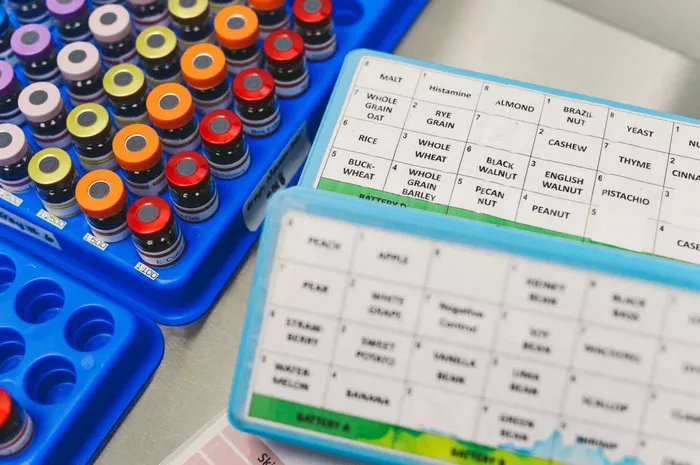Dust allergies can be a significant nuisance, causing a range of uncomfortable symptoms that can impact daily life. From sneezing and itchy eyes to more severe respiratory issues, finding the right treatments is crucial for those suffering from this common allergy. In this article, we will explore various options for managing dust allergies, including medications, home remedies, and lifestyle changes. Understanding what to take for dust allergy can help alleviate symptoms and improve the quality of life for allergy sufferers.
Medications for Dust Allergy Relief
First – generation Antihistamines: First – generation antihistamines have been used for decades to treat allergy symptoms. Examples include diphenhydramine (Benadryl) and chlorpheniramine. These medications work by blocking the action of histamine, a chemical released during an allergic reaction that causes itching, sneezing, and other symptoms. However, they can cause drowsiness, which may affect daily activities such as driving or working. They are usually taken orally in the form of tablets or syrups.
Second – generation Antihistamines: Second – generation antihistamines are often preferred due to their reduced side – effect profile. Loratadine (Claritin), cetirizine (Zyrtec), and fexofenadine (Allegra) are common examples. These medications are less likely to cause drowsiness and have a longer duration of action. They are available over – the – counter in many countries and can be taken once or twice a day, depending on the specific product. They are effective in relieving sneezing, itchy nose, and itchy eyes associated with dust allergies.
Prescription – only Antihistamines: In some cases, prescription – only antihistamines may be recommended. These include medications like desloratadine (Clarinex) and levocetirizine (Xyzal). They are often used when over – the – counter options are not providing sufficient relief. Prescription antihistamines may have additional benefits or different dosing regimens compared to their over – the – counter counterparts. They can be particularly useful for those with more severe dust allergy symptoms.
Decongestants
Oral Decongestants: Oral decongestants such as pseudoephedrine (Sudafed) can help relieve nasal congestion caused by dust allergies. They work by narrowing the blood vessels in the nasal passages, reducing swelling and congestion. However, they can have side effects such as increased blood pressure, heart rate, and insomnia. People with certain medical conditions like high blood pressure, heart disease, or thyroid problems should use them with caution. They are usually available in tablet or capsule form and may be combined with antihistamines in some products.
Nasal Decongestant Sprays: Nasal decongestant sprays like oxymetazoline (Afrin) can provide fast – acting relief of nasal congestion. They are applied directly to the nasal passages and can quickly open up the airways. However, they should not be used for more than a few days in a row, as prolonged use can lead to a condition called rebound congestion. This occurs when the nasal passages become even more congested after stopping the spray. Using nasal decongestant sprays as directed by a healthcare provider can be an effective short – term solution for dust – allergy – related nasal blockage.
Corticosteroids
Nasal Corticosteroids: Nasal corticosteroids are a key treatment for dust allergies, especially for nasal symptoms. Fluticasone (Flonase), budesonide (Rhinocort), and mometasone (Nasonex) are well – known examples. These medications reduce inflammation in the nasal passages, which helps alleviate sneezing, itching, and congestion. They are usually applied once or twice a day as a nasal spray. It may take a few days to a week of regular use to experience the full benefits. Nasal corticosteroids are generally safe for long – term use and have few side effects, although some people may experience mild nosebleeds or a dry nasal mucosa.
Oral Corticosteroids: Oral corticosteroids such as prednisone are reserved for more severe dust allergy flare – ups or when other treatments are not effective. They have a more potent anti – inflammatory effect than nasal corticosteroids but also come with more potential side effects. These can include weight gain, mood changes, increased blood sugar, and a weakened immune system. Oral corticosteroids are usually prescribed for a short course to control acute symptoms, and their use should be carefully monitored by a healthcare provider.
New or Unusual Symptoms
Identifying New or Alarming Symptoms: If new symptoms develop during the course of a dust allergy, it’s important to seek medical advice. For example, if a person starts experiencing dizziness, fainting spells, or heart palpitations in addition to their usual allergy symptoms, these could be signs of a more serious condition or an adverse reaction to a medication. Unusual swelling of the face, lips, or tongue can be a sign of an allergic reaction that requires immediate medical attention.
Importance of Timely Diagnosis: Timely diagnosis of new or unusual symptoms can lead to appropriate treatment and better outcomes. A healthcare provider can conduct a thorough physical examination, order relevant tests such as blood tests, skin prick tests, or imaging studies if necessary, to determine the cause of the symptoms and provide the most effective treatment plan.
Conclusion
Managing dust allergies requires a multi – faceted approach. From choosing the right medications, whether over – the – counter or prescription, to incorporating home remedies and making lifestyle changes, there are numerous options available. Immunotherapy can be a long – term solution for some, while complementary and alternative therapies may offer additional support for others. However, it’s essential to be aware of when to seek medical advice, especially when symptoms are severe, complications arise, or new and unusual symptoms appear. By taking a comprehensive approach and working with healthcare professionals, those with dust allergies can effectively manage their condition and improve their quality of life.
Related Topics:

